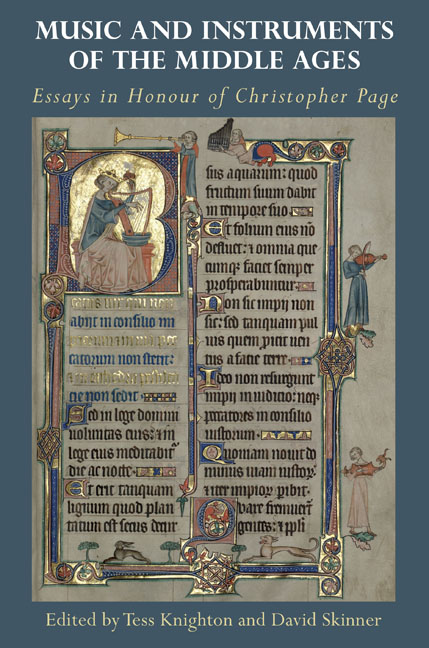Book contents
- Frontmatter
- Contents
- List of Illustrations
- List of Music Examples
- List of Tables
- List of Contributors
- List of Music Manuscript Sigla
- Acknowledgements
- Introduction
- SONGSTERS AND THEIR REPERTORIES
- CLOSE READINGS
- CREATING POLYPHONY
- MUSIC AS CULTURAL PRACTICE
- Works Cited
- Works by Christopher Page
- Index
- Tabula Gratulatoria
- Studies in Medieval and Renaissance Music
11 - La belle se siet: Where Dufay and Josquin Meet
Published online by Cambridge University Press: 24 November 2020
- Frontmatter
- Contents
- List of Illustrations
- List of Music Examples
- List of Tables
- List of Contributors
- List of Music Manuscript Sigla
- Acknowledgements
- Introduction
- SONGSTERS AND THEIR REPERTORIES
- CLOSE READINGS
- CREATING POLYPHONY
- MUSIC AS CULTURAL PRACTICE
- Works Cited
- Works by Christopher Page
- Index
- Tabula Gratulatoria
- Studies in Medieval and Renaissance Music
Summary
Any kind of research stops to pause at anomalies. It is not simply that they can reveal clues that may be hidden in more predictable material; it is surely also that they tend to have a fascination of their own, because the essence of humanistic research is so often to try to explain that sudden and surprising leap of the imagination which characterises many of the most original artistic works.
My concern here is with the poem La belle se siet, set by both Dufay and Josquin, in each case as complete anomalies within their work. For Dufay it is anomalous in having no connection with any of the three received poetic forms of the French song repertory, the ballade, the rondeau and the virelai. Its poem (Appendix A) differs from what otherwise survives of fifteenth-century polyphonic song in three main respects. First, it tells a story. The rest of the repertory reflects, praises, persuades, describes; but it almost never narrates, partly because of the way poetry works in the generation of the formes fixes which are essentially repeating structures. Second, it is built in a loose monorhyme stanza. The remaining poems set in the fifteenth century derive much of their strength from the alternation and contrast of rhyme syllables and are formidably strict in their application of such rhymes. Third, it is metrically uneven, with lines of from ten to thirteen syllables. For virtually all the remaining French lyric poetry of the time we would regard that as scribal corruption and emend the irregularities away, particularly because in this case the three main manuscripts are all copied by Italian hands; but the nature of the poem, of its metre, and of the relatively few variants between those manuscripts, suggest that emendation is out of the question here. Moreover, from the presentation of the music in the Oxford chansonnier it seems clear enough that Dufay composed only the second discantus line. At least, in Oxford the ascription is by that voice alone, whereas there is plenty of space at the top of the page for an ascription if the copyist had believed all three voices to be by Dufay. There is no other known case of Dufay adding a single voice to an existing composition.
- Type
- Chapter
- Information
- Music and Instruments of the Middle AgesEssays in Honour of Christopher Page, pp. 305 - 322Publisher: Boydell & BrewerPrint publication year: 2020



